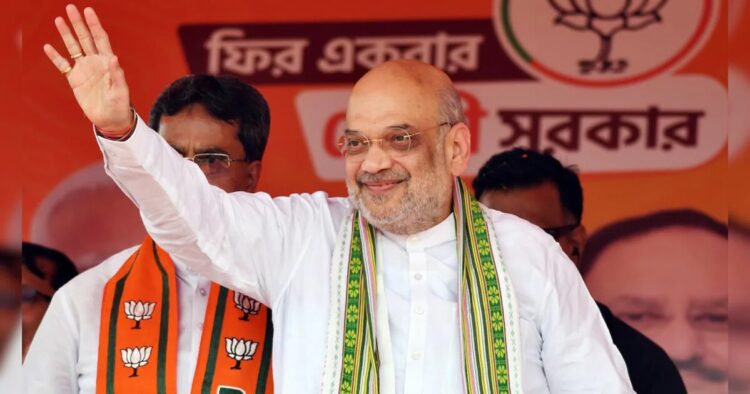Union Home Minister Amit Shah has made a strong promise, stating that if Prime Minister Narendra Modi secures a third term, their government will ensure the complete eradication of Naxalism from the country within one to two years.
Shah highlighted the recent success of security forces in Chhattisgarh’s Kanker district, where 29 Naxals, including a top leader, were eliminated in a joint operation by the Border Security Force (BSF) and the District Reserve Guard (DRG).
This operation marked the highest casualties suffered by Naxals in a single encounter in Chhattisgarh’s history of combating Left Wing Extremism (LWE).
Shah attributed the intensified crackdown on Naxalism in Chhattisgarh to the BJP’s governance in the state. He noted that under the previous Congress government, cooperation was lacking, but since the BJP came into power, the priority shifted, resulting in significant progress. Within just 90 days of BJP rule, 86 Naxals were eliminated, 126 were arrested, and over 250 surrendered.
Expressing confidence in their approach, Shah emphasized the narrowing scope of Naxalism. Home Minister claimed is now confined to only four districts in Chhattisgarh. He underscored the decisive action taken by the government, leading to tangible results in combating the insurgency.
Shah’s assertion comes amidst ongoing efforts by the central and state governments to address the longstanding issue of Naxalism, which has plagued several states in India. The promise of eradication within a short timeframe reflects the government’s determination to tackle this security challenge head-on.
While Shah’s commitment has garnered attention and support from some quarters, others remain skeptical about the feasibility of completely eliminating Naxalism within the specified timeframe. Critics argue that the roots of Naxalism are complex and deeply entrenched, requiring sustained efforts beyond electoral terms.
As the country gears up for elections and political discourse intensifies, the issue of security and counterinsurgency strategies is likely to remain a focal point. The efficacy of Shah’s pledge will undoubtedly be scrutinized, with stakeholders keenly observing developments in the fight against Naxalism.
With Naxalism posing a persistent threat to internal security and socio-economic development in affected regions, the government’s commitment to addressing this challenge remains a critical priority. Whether Shah’s promise translates into tangible outcomes will ultimately depend on the effectiveness of government policies, security operations, and broader socio-economic initiatives aimed at addressing the root causes of extremism.















Comments